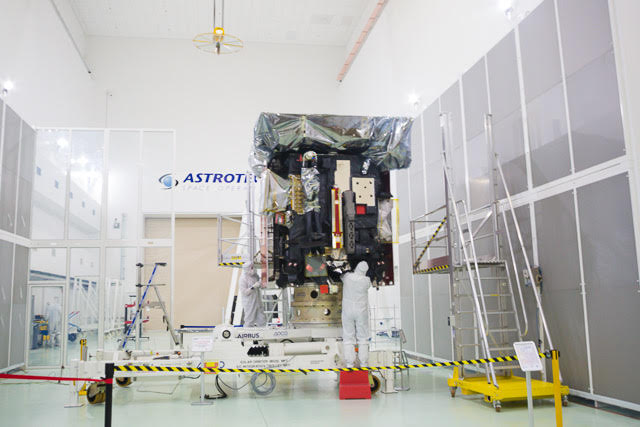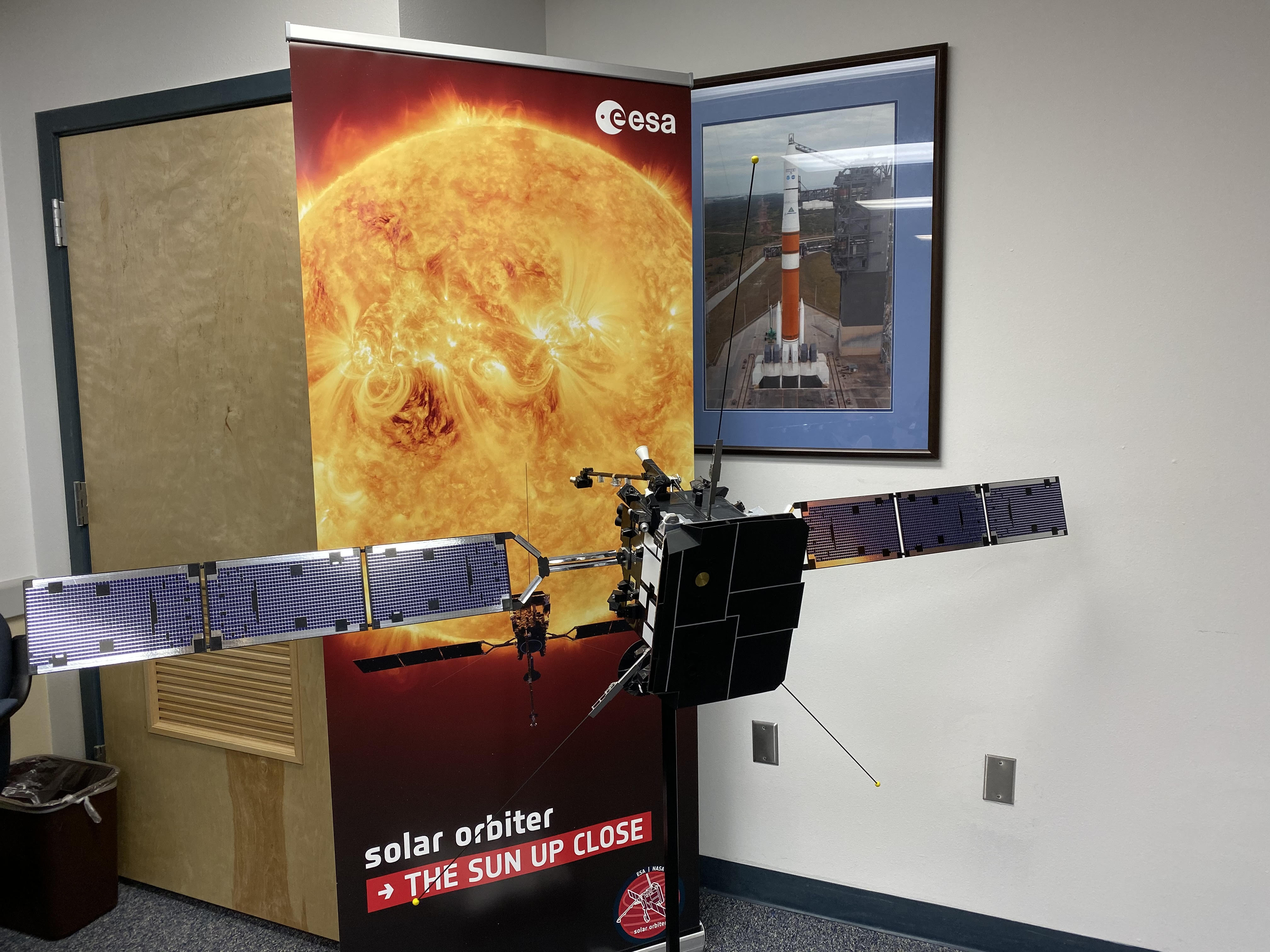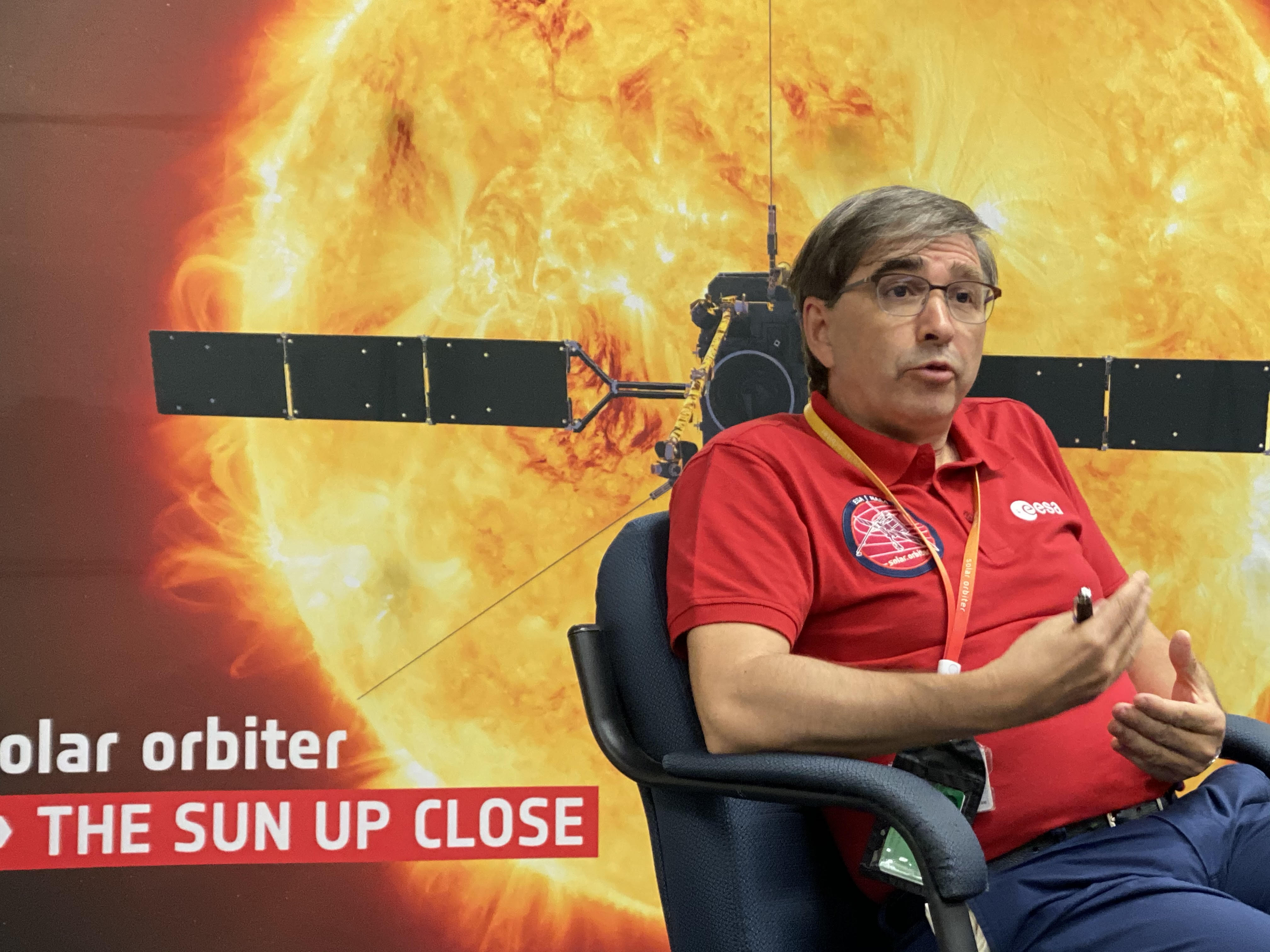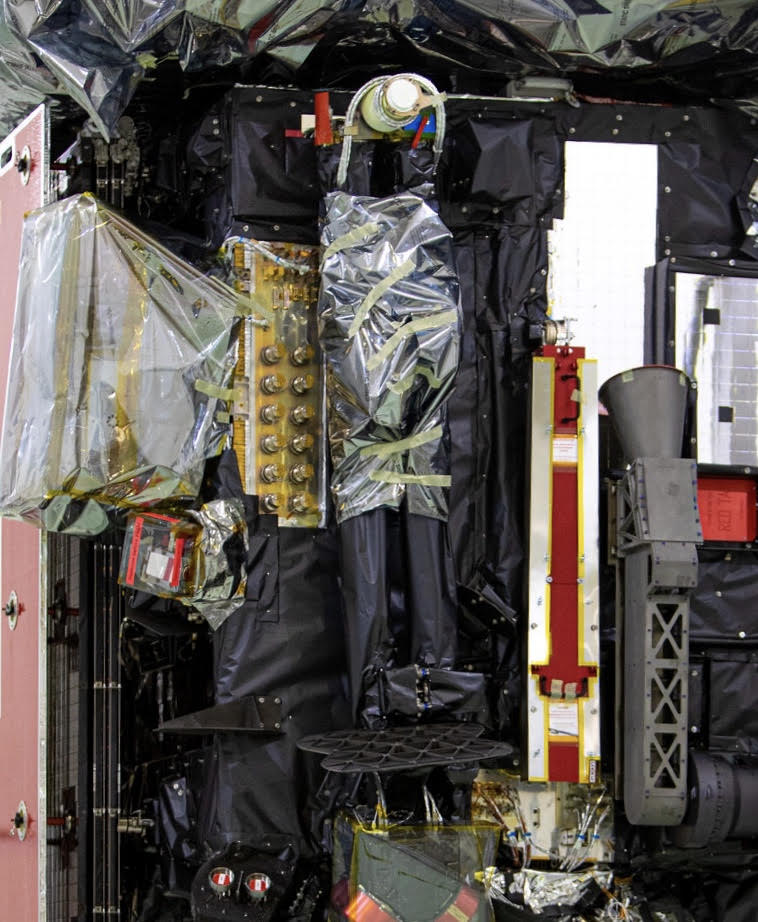The Solar Orbiter up close: Inside the clean room with the next sun probe (photos)
CAPE CANAVERAL, Fla. — Final steps are underway here to prepare the next sun-observing spacecraft, a $1.5 billion joint project between NASA and the European Space Agency (ESA), for launch.
Dubbed Solar Orbiter, the spacecraft will blast off from Space Launch Complex 41 at Cape Canaveral Air Force Station here in Florida, atop a United Launch Alliance (ULA) Atlas V rocket. The craft will lift off sometime during a planned 2-hour window that opens on Sunday (Feb. 9) at 11:03 p.m. EST (0403 GMT on Feb. 10).
The 3,970-lb. (1800 kilograms) spacecraft, encased in its protective fairing, was hoisted on top of its rocket on Friday (Jan.31), so teams can now finish prepping the duo for the upcoming flight. But before the spacecraft rolled to the launchpad, Space.com got a look at it in the clean room.
Related: European Solar Orbiter will give us our first look at the sun's poles
Solar Orbiter arrived at the Astrotech Space Operations facility in Titusville, Florida, late last year. (Astrotech, located near NASA's Kennedy Space Center, is one of two processing facilities in the area that readies spacecraft for launch.)
NASA invited journalists to the facility to see the spacecraft up close. Representatives from ULA, ESA and NASA were on hand to discuss the mission. In a large conference room, a model of the spacecraft, deployed as it would be in space, stood in front of an image of the sun.
Next to the model sat César García, Solar Orbiter project manager at ESA. He gave a general overview of the mission, explaining that the spacecraft is not going to fly as close to the sun as NASA'S Parker Solar Probe (PSP), but Solar Orbiter will stare directly at the sun — something PSP doesn't do (and neither should you).
Breaking space news, the latest updates on rocket launches, skywatching events and more!
"It's going to take the closest pictures of the sun ever taken," said García. "And we're going outside of the ecliptic plane and taking pictures of the sun's polar regions."
This mission is all about studying the sun, and a close vantage point allows for better observations, García said.
Solar Orbiter will be used to study how the sun creates and controls the heliosphere, the vast, bubble-like region of space that contains the solar system. The spacecraft will combine in situ and remote-sensing observations to increase our understanding of the sun and its processes.
Penelope Herbst, a contamination engineer for NASA's Launch Services Program, led the team who took us into the clean room. "I want to prepare you for what's going to happen to you," she told us. "We're going to take you downstairs [to the clean room], get you garmented up, inspect your equipment and get you in."
García explained that the spacecraft needs to be kept very clean because "The instruments are very sensitive to things like particles and molecular contamination."
Basically, if any bits of DNA, residue from things like perfume, or dirt from outside the clean room came in contact with the spacecraft, it could spell disaster for Solar Orbiter's instruments. So we all made sure to follow the rules.
"At the end of the day, this mission is about allowing our scientists to do the best science, and they can only do that if the instruments are clean," García added. No pressure, right?
The spacecraft was housed in a large clean room. Anyone who enters has to follow a strict protocol, including wearing a special garment known as a bunny suit.
Donning appropriate clean-room attire is a detailed, multistep process, and a team of folks was stationed in the changing room to ensure that everyone got properly outfitted. Space in the changing room is limited, so only a few people were allowed in at a time.

The first thing I had to do before I could even enter the changing room was clean my shoes. A special motorized brushing machine sat just inside the door; this removed outside dirt and other materials from my shoes. Next, I was given a pair of cloth booties to slip over my shoes, and then I walked into the changing room.
I handed over all camera equipment to the clean room staff, who certified it germ-free after scrubbing it down with alcohol wipes.
Herbst handed me a cloth jumpsuit to put on over my clothes. I've been in other clean rooms before and even though this was my first time inside this clean room at Astrotech, the process is the same. "I've dressed you before," she said. "You know the drill."
I had to put on another pair of booties to go over the cloth ones; the new pair zipped up to the knees and also covered the jumpsuit. Finally came the pièce de résistance: a cloth hood with an opening just large enough for my face.
After I got suited up, Penelope made sure that my outfit was tucked in properly. I put on a pair of rubber gloves, and she applied special tape to my outfit to make sure everything was sealed in place. Now I was ready to see a spacecraft!
But there was just one more thing I needed to do: walk through the air shower.
This shower is an integral part of the clean room procedures, serving as one final safeguard to prevent unwanted particles from ending up on spacecraft. These showers always remind me of the ones I've seen in movies and on TV, like when scientists decontaminate themselves after handling infectious diseases.
You open one door, it shuts behind you, and then you're blasted with jets of air to make sure any remaining contaminants are gone. Now, I was finally able to enter the clean room.
Solar Orbiter looked a lot different in its launch configuration than the model I'd seen earlier. Its solar panels were tucked away, and its instruments were packed up, but luckily, Ian Walters, the mission's project manager from Airbus Defence and Space (the company that built the spacecraft) was on hand to give us a tour of the spacecraft and its instruments.
Solar Orbiter's suite of 10 instruments combine in situ (directly around the spacecraft) and remote sensing (looking at the sun) measurements. Together, these instruments will analyze the sun's magnetic field, study the solar wind — or energetic particles flowing from the sun — and much more.
Five of the instruments peer through holes in the spacecraft's heat shield to observe the sun, while a few look at the environment around the probe to measure solar particles and radiation.
Walters pointed out the spacecraft's magnetometer and plasma analyzers. He also explained which instrument belongs to NASA; that instrument, called SoloHi, is a heliospheric imager, designed to image the solar wind and coronal mass ejections (CMEs).
A high-gain antenna (which looks like a 1.8-meter, or 6 feet, dish) will beam all the data back to Earth. Meanwhile, a combination of medium- and low-gain antennas will help the spacecraft talk to its science team when the probe's closer to Earth in its orbit.
Solar Orbiter is scheduled to launch on Sunday (Feb. 9) and is expected to make its first science measurements as early as May. Full science operations will commence in November 2021; that's when the craft's imagers will come online.
- Here's what Earth looks like when you're heading to the sun
- Solar quiz: How well do you know our sun?
- Launch photos! NASA's Parker Solar Probe blasts off to touch the sun
Follow Amy Thompson on Twitter @astrogingersnap. Follow us on Twitter @Spacedotcom or Facebook.


Amy Thompson is a Florida-based space and science journalist, who joined Space.com as a contributing writer in 2015. She's passionate about all things space and is a huge science and science-fiction geek. Star Wars is her favorite fandom, with that sassy little droid, R2D2 being her favorite. She studied science at the University of Florida, earning a degree in microbiology. Her work has also been published in Newsweek, VICE, Smithsonian, and many more. Now she chases rockets, writing about launches, commercial space, space station science, and everything in between.





